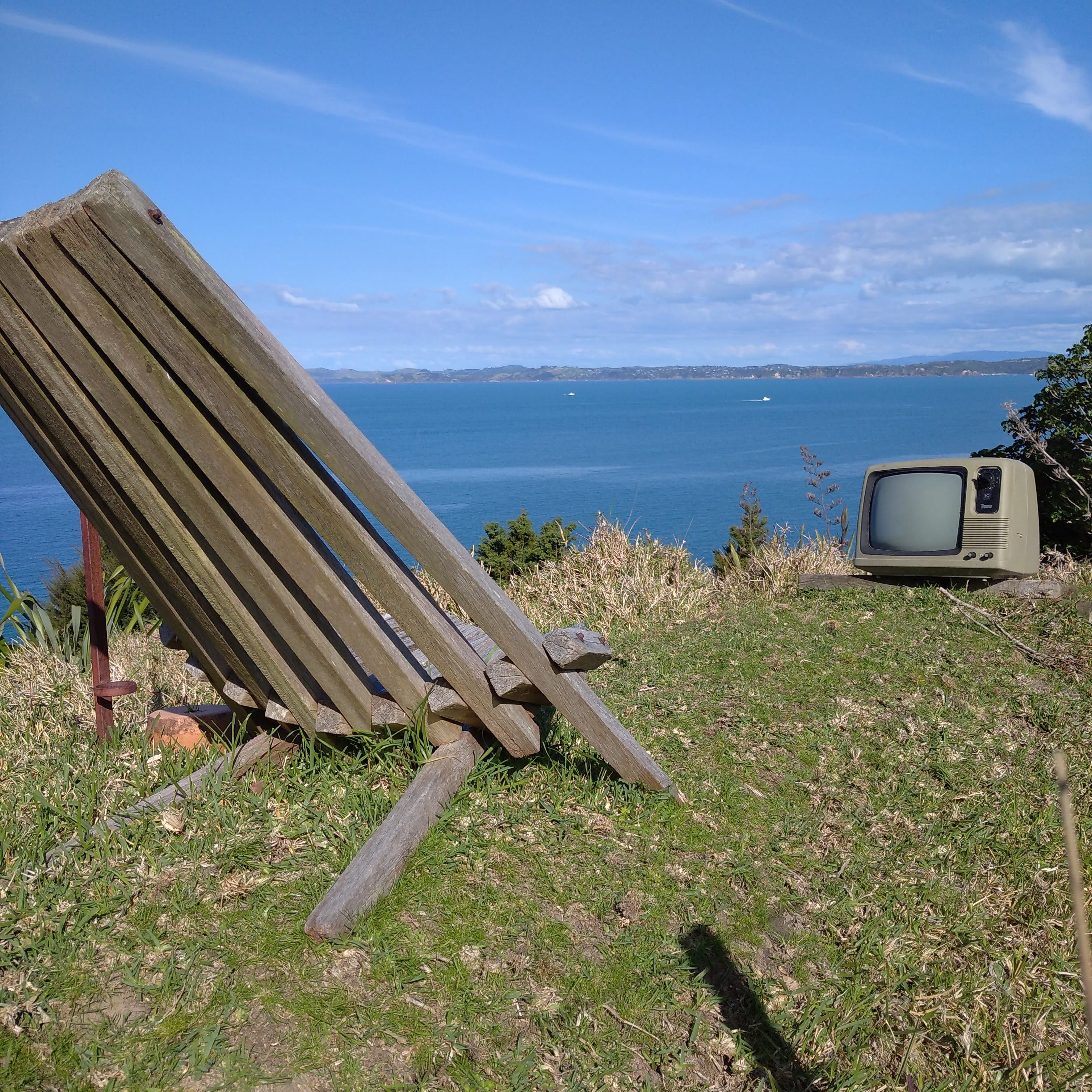-
Content Count
2,788 -
Joined
-
Last visited
-
Days Won
97
Content Type
Profiles
Media Demo
Forums
Gallery
Calendar
Store
Everything posted by aardvarkash10
-
Totally agree Jim. I hate good tradies who undercharge - they are aften not around next time you need them
-
I ended up having it made. Ryan runs a workshop from home (just out of Waiuku on the Awhitu Penninsula) part time specialising in stainless exhaust fabrication and has a strong sideline in resoring and building 4WD projects from what I could see. Super-friendly, quick, and reasonable but not cheap - $220 all up. Exhaust is in 316 and is an exact copy of the fabricated item it replaces. Ryan machined the grip rings on the barb for the water inlet - nice attention to detail. He is contactable if you have something in mind - 027 289 4007
-

Wanted to borrow - 56mm flywheel nut socket for Yanmar 2QM20
aardvarkash10 replied to aardvarkash10's topic in TechTalk
For anyone following this in years to come, the rear main seal for our 2QM20(H) is actually 60-82-8 dimensions, and the SKF part number is 23445. Original part is NOK AH3220F, but this has been superceded. It looks like Yanmar had a series of different specs over time for this engine. Be warned! -

Wanted to borrow - 56mm flywheel nut socket for Yanmar 2QM20
aardvarkash10 replied to aardvarkash10's topic in TechTalk
one of these things is not like the other, one of these things is not quite the same... On the right, the seal as specified in the manual and purchased prior to disassembly (generic 65-88-9) On the left, the part that was removed and is around 5mm smaller in diameter. On a saturday, with all engineering supply shops closed. Good day for drinking, and I'm on the wagon. FFS. -

Wanted to borrow - 56mm flywheel nut socket for Yanmar 2QM20
aardvarkash10 replied to aardvarkash10's topic in TechTalk
Exhaust was blown - thats off having a stainless build done. Same trip the rear main oil seal cried enough and it dumped 500ml of engine oil into the bilges over about 3 hours, so its gearbag off, flywheel off, bearing seal carrier plate off, new $20 seal, assembly is the reverse of the above. While out its got new internal anodes, a few new water hoses, new fuel lines, water pump checked (relatively new impeller in it anyway), oil and filter change, and if I have time it will get a coat of hammerite or something similar. Also bunging a lifting diode into the alternator to prop -

Wanted to borrow - 56mm flywheel nut socket for Yanmar 2QM20
aardvarkash10 replied to aardvarkash10's topic in TechTalk
yup - thats how I looked at it. Plus I hate giving it to someone to do when I can do it myself. These engines are so simple and easy to work on generally - there is no excuse for not doing it (especially when you did your time in the automotive industry). -

Wanted to borrow - 56mm flywheel nut socket for Yanmar 2QM20
aardvarkash10 replied to aardvarkash10's topic in TechTalk
crisis averted. If anyone ever finds themselves in need, drop me a message and you can borrow it. Otherwise this will likely be its only ever use. -

Wanted to borrow - 56mm flywheel nut socket for Yanmar 2QM20
aardvarkash10 replied to aardvarkash10's topic in TechTalk
Yeah, its keyed, no locking tab that I can see on it. I've got a 3/4 bar so its just the socket I need - failing all else the engine is currently sitting on the trailer, so I'll haul its sorry ass off to a Yanmar place and pay them to remove the offending nut. Thanks everyone for the very useful suggestions and help! -

Wanted to borrow - 56mm flywheel nut socket for Yanmar 2QM20
aardvarkash10 replied to aardvarkash10's topic in TechTalk
This is true Wheels and the witness marks tell the story. Unfortch, its difficult to get to the correct torque if you use the hammer and cold chisel for installation. -

Further woes - removing an engine via companionway and boom
aardvarkash10 replied to aardvarkash10's topic in TechTalk
The recalcitrant beast, tamed. Knocked up a small rolling frome for it to sit on to make life easier. Now its off to the steam cleaning location for a swift removal of gunk. -

Further woes - removing an engine via companionway and boom
aardvarkash10 replied to aardvarkash10's topic in TechTalk
Engine out today. Went pretty smoothly with the exception of a minor dent in the companionway top step and the engine choosing to become a horizonal rather than vertical twin as it was transported off the jetty. Nothing monumental to add to the excellent advice in this thread except to say it works. -
good taste never goes out of fashion
-
I'd ask one of the people listed in this document. https://www.westhaven.co.nz/getmedia/e07684df-252d-4b62-8cc2-a2146400a62a/Electrical-Connections_2.pdf/
-
taken me four pages to finally figure out that these are not the bright flares you are looking for... (to paraphase Obi Wan)
-
Its the inlet, so unplugged doesn't matter. In any case it comes with waterproof covers (according to the blurb). IP44 rating would be plenty - it is sufficient for sprays of water. If you are getting water at your marina jetty that is beyond a spray, you will be having bigger problems than whether your shore power inlet is sufficiently waterproof. Shore power has to be supplied through an RCD so there is little to no electrical risk even if water gets into the connector.
-
Given that sailing is generally an anachronism in and of itself, that's a reasonable assumption.
-
In an emergency you use ALL available communication. There is no guarantee that a vessel in line of sight has radio comms monitored, is aware of any epirb distress signal you may have sent, or is looking directly at you in daylight and able to notice you doing a Watusi on cabin top of your slowly sinking vessel. They may notice a flare, especially at night. Nothing is a replacement for the other.
-
Same kill-joys that want to ban fireworks...
-
a friend was in the first group to windsurf teh strait, and the first woman ot do it. She now wingfoils and is teaching Mrs Aaardvark to do it. https://www.nzonscreen.com/title/surfsail-1978
-
This stuff, or similar. If you think the diesel is going stale, you can either empty the tank and store the removed diesel, adding it back in to fresh fuel at, say, 1:4 ratio (1 part old to 4 parts new). This assumes that you would go through that amount in six months or so. If you have a big fixed tank and barely use it, you might consider emptying the main tank and fitting a small tote tank with a changeover valve between the main and the tote on the fuel line to the pump. That way, your diesel is always reasonably fresh when you are not using the engine a lot (winter race series
-
whats wrong with opening a hatch? *bloody soft these young ones...*
-
more is better. Less room for condensation to form.
-
...and it turns out he answers the phone and gives coherent and intelligent answers even when he's on holiday!
-
Consider it a proof of concept. It needs to be faster, on wider spaced rails for sure, terminate in downtown Auckland or close by, and ideally have links to the Bay of Plenty, Auckland Airport, and the North Shore. Even longer term, medium speed rail to Wellington. True high speed (TGV, Shinkansen 250-300kph) is too expensive for our population, but a train that could cruise at 150 - 170 kph makes the trip AKL-WLG approximately 4.5 hour passage. Flying is around 2.5 hours if things go well...


